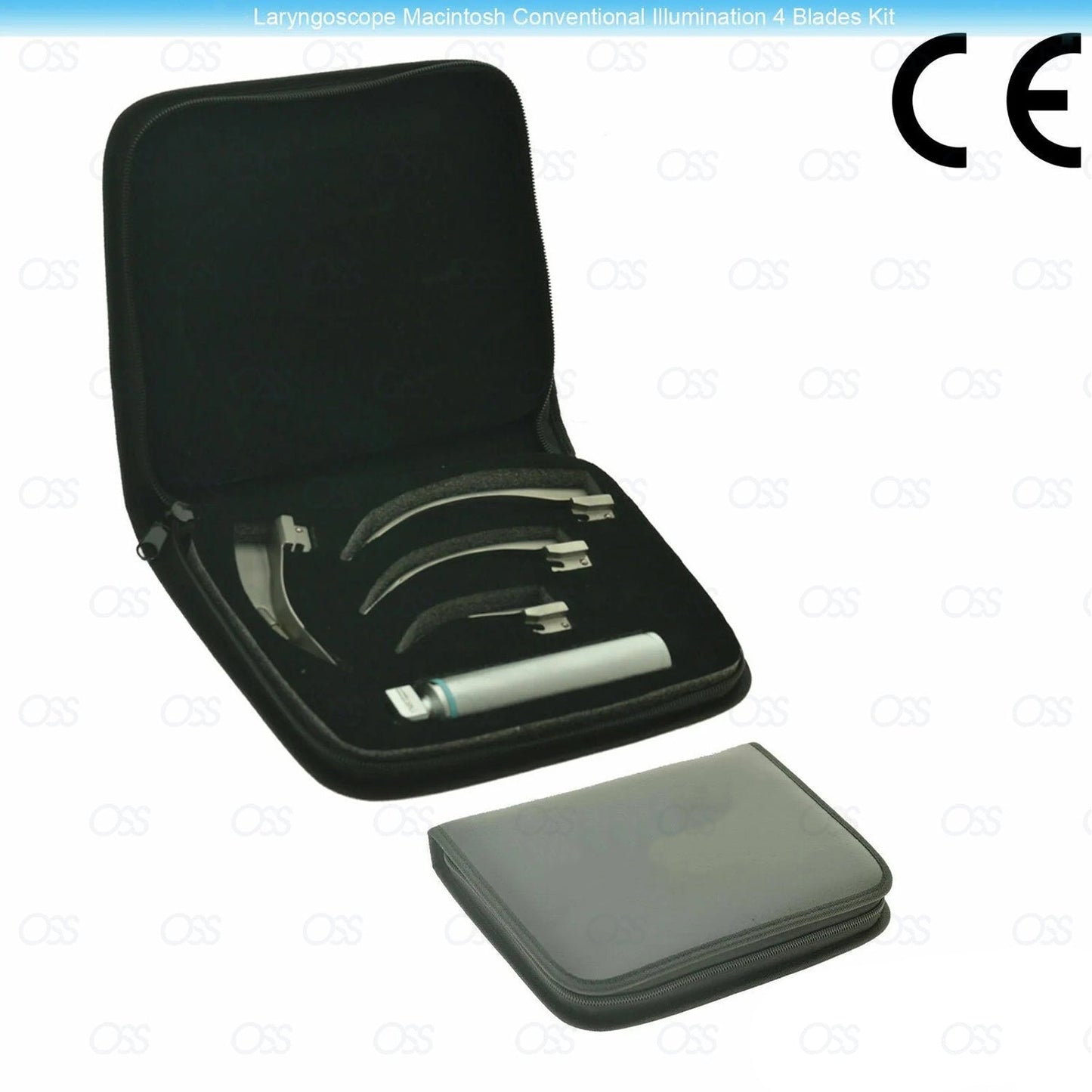Oral Surg Supply
Evaluation of Macintosh Laryngoscope 4 Blades in Comparison with Video Laryngoscopy for Endotracheal Intubation
Evaluation of Macintosh Laryngoscope 4 Blades in Comparison with Video Laryngoscopy for Endotracheal Intubation
Couldn't load pickup availability
Evaluation of Macintosh Laryngoscope 4 Blades in Comparison with Video Laryngoscopy for Endotracheal Intubation
a. Intubation Success Rate
-
Macintosh Laryngoscope (ML): The success of intubation using the ML blade heavily depends on the operator's experience and skill. While experienced practitioners may achieve high success rates, less experienced individuals may find the direct visualization technique challenging, especially in patients with difficult airways.
-
Video Laryngoscopy (VL): VL tends to provide a higher first-pass success rate, especially in patients with challenging airways. It offers a more detailed and indirect view of the airway, which can help even less experienced providers succeed in intubation.
b. Time to Intubation
-
Macintosh Laryngoscope (ML): The time required for intubation can vary depending on the skill of the operator. In general, experienced operators can intubate quickly, but it may take longer compared to VL, especially for less experienced clinicians.
-
Video Laryngoscopy (VL): VL often results in faster intubation times due to the enhanced visualization it offers, which reduces the need for multiple attempts and may reduce the difficulty in aligning the airway structures. However, in skilled hands, the time difference might be minimal.
c. Ease of Use
-
Macintosh Laryngoscope (ML): Requires a direct line of sight to the vocal cords, which can be difficult in patients with a difficult airway or when the operator is less experienced. Proper technique is crucial, and the laryngoscopes must have adequate training.
-
Video Laryngoscopy (VL): VL is generally easier to use, particularly in difficult airways, as it offers a video feed that does not rely on the direct line of sight. The ability to visualize the glottis without alignment of the operator's eye with the patient's airway makes it less technique-dependent.
d. Training and Skill Requirement
-
Macintosh Laryngoscope (ML): Requires significant training and experience to be used effectively, especially for intubating difficult airways.
-
Video Laryngoscopy (VL): While VL also requires training, it may be more forgiving for less experienced practitioners. The video feed can help guide the intubation, reducing reliance on operator skill.
e. Patient Safety and Complications
-
Macintosh Laryngoscope (ML): There is a higher risk of trauma (e.g., dental injury, soft tissue injury) due to the direct manipulation of airway structures. Additionally, difficulty in visualization increases the chances of complications like esophageal intubation or failed intubation.
-
Video Laryngoscopy (VL): VL generally reduces the risk of trauma due to better visualization of the airway and the ability to see the airway structures more clearly. It can also reduce the number of attempts required, which lowers the risk of complications.
Features:
-
- Surgical Stainless Steel
-
- Reusable after sanitation / Auto-clave
-
- Non-plastic, sterile blade
-
- The polished acrylic stem produces exceptional illumination
-
- The handle can be used with a reusable “Green” system Fibre Optic blades
Benefits:
-
- Answers the professional’s request for disposable
-
- The perfect solution to cleaning problems in the EMS field
-
- Exceptional viewing capability
-
- Suitable for “everyday” hospital use, cost-efficient
Product Information / what’s included in the KIT:
- Base Handle 5.5” / 14cm / 140mm, length (can be used for Miller or Macintosh Blades)
- Macintosh Blade 1 Length: 3.75” / 9.5cm / 95mm
- Macintosh Blade 2 Length: 4.5” / 11.5 cm / 115mm
- Macintosh Blade 3 Length: 5.25” / 13.3cm / 133mm
- Macintosh Blade 4 Length: 6.01”/ 15.5 cm / 155mm
Share


